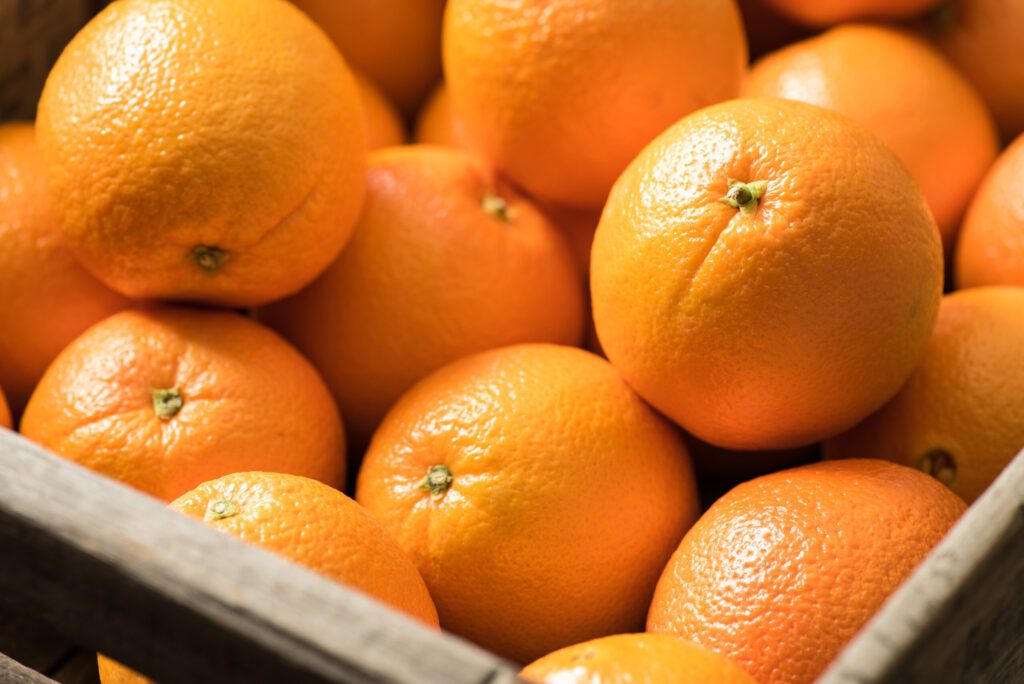by ERIKA ALDRICH
Sponsored by Farm Credit of Central Florida
When it comes to naming the lifeblood of the Florida agriculture industry, there’s a good case to be made for it being citrus. Historically, the Sunshine State and citrus have been nearly synonymous. However, as a new season is poised to begin, the Florida citrus industry is under duress. The scourge of citrus greening, or Huanglongbing (HLB), continues to take a toll on each year’s total harvest numbers, and other pests and diseases like postbloom fruit drop (PFD), phytophthora root rot disease, black spot, and more all pose problems for citrus growers as well. Furthermore, issues like competition from imported fruit and meeting the USDA’s Brix level requirements for pasteurized orange juice all create challenges for Florida citrus. However, the Florida citrus industry is not one to back down from a fight, and promising research into combating citrus greening and other challenges is constantly in the news. Take a look at the Florida citrus industry on the cusp of the 2021-2022 growing season.
Citrus by the Numbers
The 2019-2020 crop year saw a total all-citrus production of 73.2 million boxes, which was a decrease of 5 percent over the prior harvest year. The total orange production for the 2019-2020 harvest year was 67.3 million boxes.
In early October 2020, the USDA forecast the 2020-2021 citrus season to see 62.6 million boxes of citrus, broken down into 57 million boxes of citrus, 4.5 million boxes of grapefruit, and 1.1 million boxes of tangelos and tangerines. The season all-citrus total ended with 57.7 million boxes of citrus, which was comprised of 52.8 million boxes of oranges—22.7 million boxes of non-Valencia oranges and 30.1 million boxes of Valencia oranges—4.1 million boxes of grapefruit and 890,000 boxes of tangelos and tangerines.
The first official USDA citrus forecast for the 2021-2022 season for Florida is slated for Tuesday, October 12.
The USDA’s National Agricultural Statistics Service (NASS) maintained that Florida saw 350,900 acres of harvested oranges, 21,700 acres of grapefruit, and 7,900 acres of tangerines in 2020. Between processed and fresh market oranges, Florida growers produced 3.03 million tons of oranges, which had a production value of $837 million dollars. Grapefruit’s 206,000 tons had a production value of $66.4 million, and tangerine’s 48,000 tons were valued at $26 million.
A Forecast of Caution
Florida’s citrus harvest totals have continued to drop, year after year. UF/IFAS professor emeritus and leading citrus economist Tom Spreen forecast in August 2021 that under best-case scenarios, orange production would not surpass the 2020-21 season level until after the 2028-29 season if growers don’t replant more aggressively than the current 80% rate of replacing lost trees.
Hope for the Future
While the Florida citrus industry is in the thick of it, there are many promising developments on the horizon. Researchers with UF/IFAS continue to work on breeding an HLB-resistant or HLB-tolerant variety, even going as far as resurrecting a once-popular early-season orange variety, Parson Brown. Citrus groups are advocating for “enforcement discretion” to lower Brix requirements from 10.5 to 10.0, and UF/IFAS researchers are investigating the advantages of blending Sugar Belle mandarin juice with traditional orange juice.
Furthermore, the research into promising treatments and cures like gibberellic acid, kaolin clay, endophytic citrus microbes, cover crops, using the RNA of citrus yellow vein disease, and the use of citrus peptides—just to name a few—is intense and ongoing.


